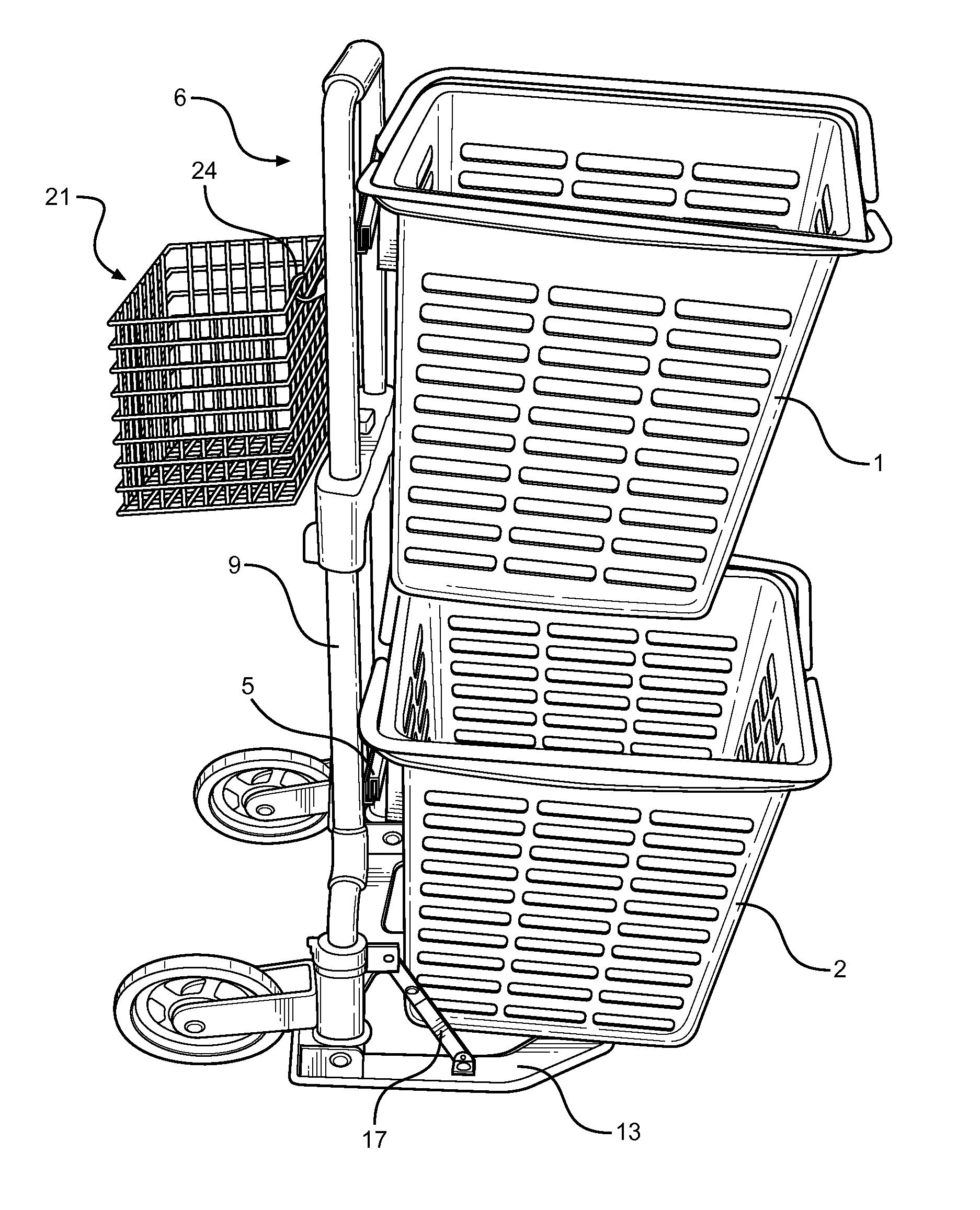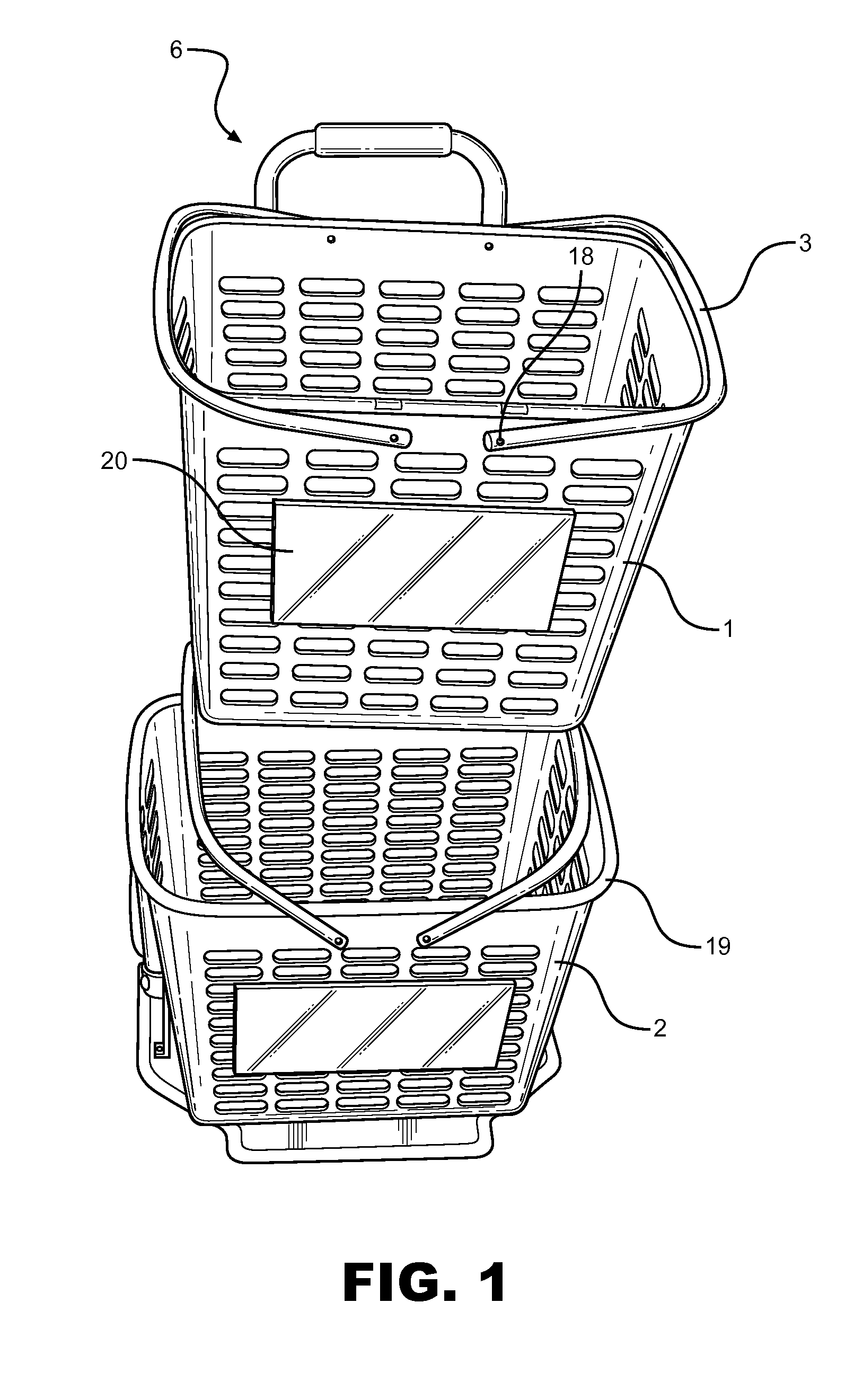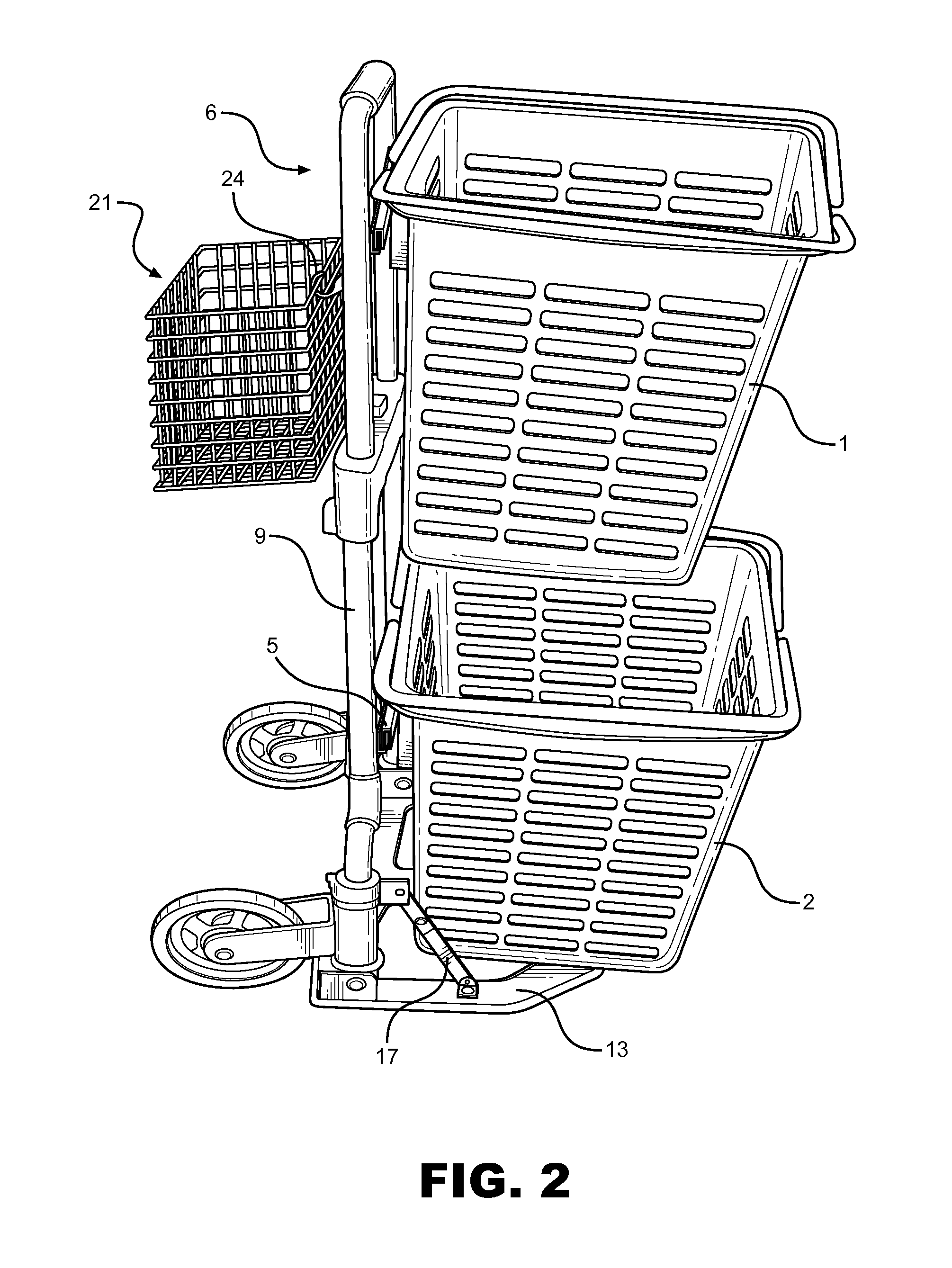Market Basket System
a basket system and market basket technology, applied in the field of grocery transport baskets, can solve the problems of hazardous cleaning supplies being placed next to edible food, inability to organize and separate food within these structures, and inability to meet the needs of consumers, so as to improve the mobility and transportation of products, eliminate non-reusable materials, and improve collection and transportation qualities
- Summary
- Abstract
- Description
- Claims
- Application Information
AI Technical Summary
Benefits of technology
Problems solved by technology
Method used
Image
Examples
Embodiment Construction
[0023]Referring now to FIG. 1, there is shown a frontal view of the first embodiment of the present invention. Two baskets 1 and 2 are removably attached to a hand cart 6. The baskets 1 and 2 are stacked vertically and with a sufficient gap to allow for placement of items in either basket while attached to the hand cart 6. A plurality of handles 3 on each basket 1 and 2 allow the user to easily remove and transport the baskets 1 and 2 in either a filled or empty condition. The handles 3 rotate about their connection to the baskets 18 to form a unified handgrip above each basket 1 and 2 for the user. The baskets 1 and 2 are composed of a lightweight material such as plastic, wicker or other suitable material one in the art would choose, including decorative wire. The baskets 1 and 2 as shown are perforated for ventilation and visibility. Alternatively, the baskets may be comprised of solid sidewall structures. Lips 19 on the upper portion of each basket 1 and 2 allow for another grip...
PUM
 Login to view more
Login to view more Abstract
Description
Claims
Application Information
 Login to view more
Login to view more - R&D Engineer
- R&D Manager
- IP Professional
- Industry Leading Data Capabilities
- Powerful AI technology
- Patent DNA Extraction
Browse by: Latest US Patents, China's latest patents, Technical Efficacy Thesaurus, Application Domain, Technology Topic.
© 2024 PatSnap. All rights reserved.Legal|Privacy policy|Modern Slavery Act Transparency Statement|Sitemap



